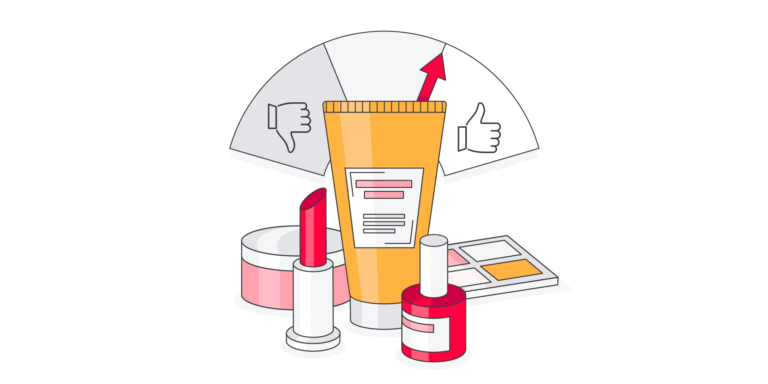
At CMG Digital we feel so strongly about it that we have completely rebranded the company to double down on our commitment to people – not platforms. It’s a realisation that’s growing across industries – manifested through the growth of the Business to Human (B2H) strategies. Our clients often claim that working with CMG is not only a result-oriented process, but a great learning experience for them and all stakeholders.
Multiple studies drive home the power of this new reality: 45% of Gen Z consumers will stop buying from brands because of ethical or sustainability concerns; more than a third of UK consumers can and do walk away from companies that fail to align with their beliefs; while 72% of consumers are actively buying more sustainable products.
As a leading digital design and smart production agency that works with owners of some of the biggest brands in the world, such as GSK, P&G and Novartis, we recognise that the latest platforms are a crucial element of our work, helping us to engage more quickly and efficiently than ever before. Yet we also understand that they are simply the means to an end – and not the end in itself. To be truly sustainable, digital engagement must always connect a business to the people it serves.
Creation: look back on past campaigns to make sure all lessons are learned – and before commissioning new assets, think how to build in re-usability. It’s also important to ensure that the latest, most efficient and effective tools are employed: storing assets in the cloud, for instance, eliminates repeated unnecessary emailing of large assets between creative teams.
Digital resource efficiency
Audit: before moving on to creation, it’s worth auditing existing assets to see if these can be re-purposed to meet the assets identified in the content plan: existing but unused images, for example, that could save emissions, time and money.
Archive: when it comes to the end of the campaign, a business must be efficient in what it keeps and what it deletes. Achieving a balance is key: keeping everything incurs unnecessary carbon and financial costs; discarding everything means that still relevant assets are wasted.
We believe that this is unsustainable on both the business and people levels:
Delivery: audience access to a central cloud location will improve sustainability performance as assets are delivered more effectively. In addition, a cloud-based repository provides valuable, real-time usage metrics – which email simply can’t provide. These metrics will also provide insight into optimising the next campaign, ensuring that sustainability gains are ongoing.
Set objectives: the first step is to lock down the overall objective. Once established, a business can develop a focused content plan that supports its overarching goal.
The ultimate digital efficiency is to give our audiences what they want, when they want it, in the ways that are most inspiring to them. This is, after all, one of the primary motivations behind the creation of a more sustainable industry: by putting people at the heart of engagement strategies, we understand their beliefs and reflect them through our brands. If we can master this, then we really will have achieved digital sustainability.
It can be difficult to imagine that digital content has a physical impact – but the fact is that its creation and use consumes resources and generates waste. An average business email with a large attachment creates around 50g of CO2, which results in 135kg of CO2 pumped into the atmosphere per user, per year. To put that into context, it’s equivalent to every single business email user on the planet driving an additional 200 miles in their car every year. Adds, up, doesn’t it?
Engage people – not platforms
Sustainability is a now a business reality. Driven by clear evidence of ongoing climate change, consumers increasingly look to brands that demonstrate commitment to meaningful action. Today, sustainability and other ethical considerations match factors such as quality and price as consumers weigh their purchasing decisions.
As the pandemic has accelerated our reliance on digital content and connections, consumer activists are turning their attention to digital pollution. It’s the often-overlooked cost of our digital society, but the internet and its supporting infrastructure generate a staggering 3.7% of global greenhouse gas emissions – putting it on a par with sectors such as aviation.
Digital technologies are, however, proving to be a double-edged sword. The pandemic has focused the value of digital engagement as never before: at times of physical separation, they help us to maintain precious human connections. It’s something of an irony, then, that many in the industry have moved to meet this upsurge in demand with platforms that increasingly use AI and automation – cutting human insight and experience out of the digital loop.
- Business: research from McKinsey suggests that a headlong dash to deploy digital platforms that ignore human insight undermines effectiveness, while a people focus is the key that unlocks their value: “Top companies that sustain a comprehensive focus on the customer (in addition to operational and IT improvements) can generate economic gains ranging from 20 to 50 percent of the cost base.”
- People: we attach real value to humanity as it’s reflected through, for example, more intuitive purchasing journeys, truly supportive customer care and an understanding of what motivates us to buy. Without this empathetic brand relationship, there will never be any real trust. This ‘human dividend’ will ultimately become the brand differentiator as digitisation progresses.
Businesses need to act – to protect our planet and their competitive advantage. The question is, “how?” The answer is to put people – not platforms – at the heart of digital strategies.
As with any resource intensive production process, careful planning will ensure resource efficiency. The aim is to deliver the right assets, with the right messages, that resonate with the right audiences – with minimal waste.



